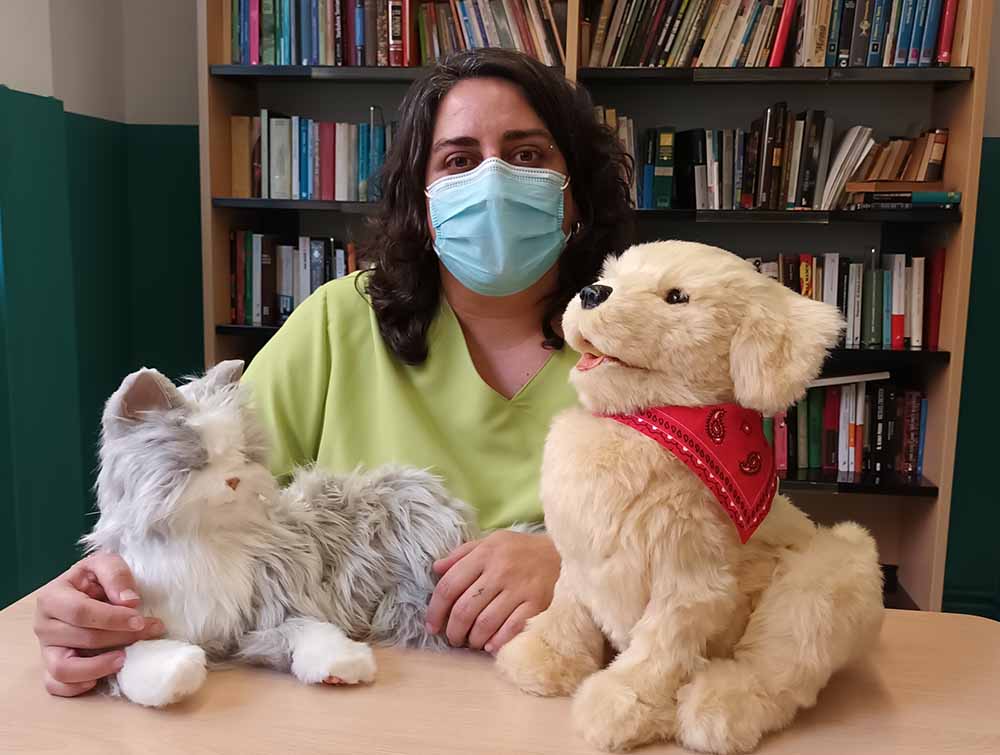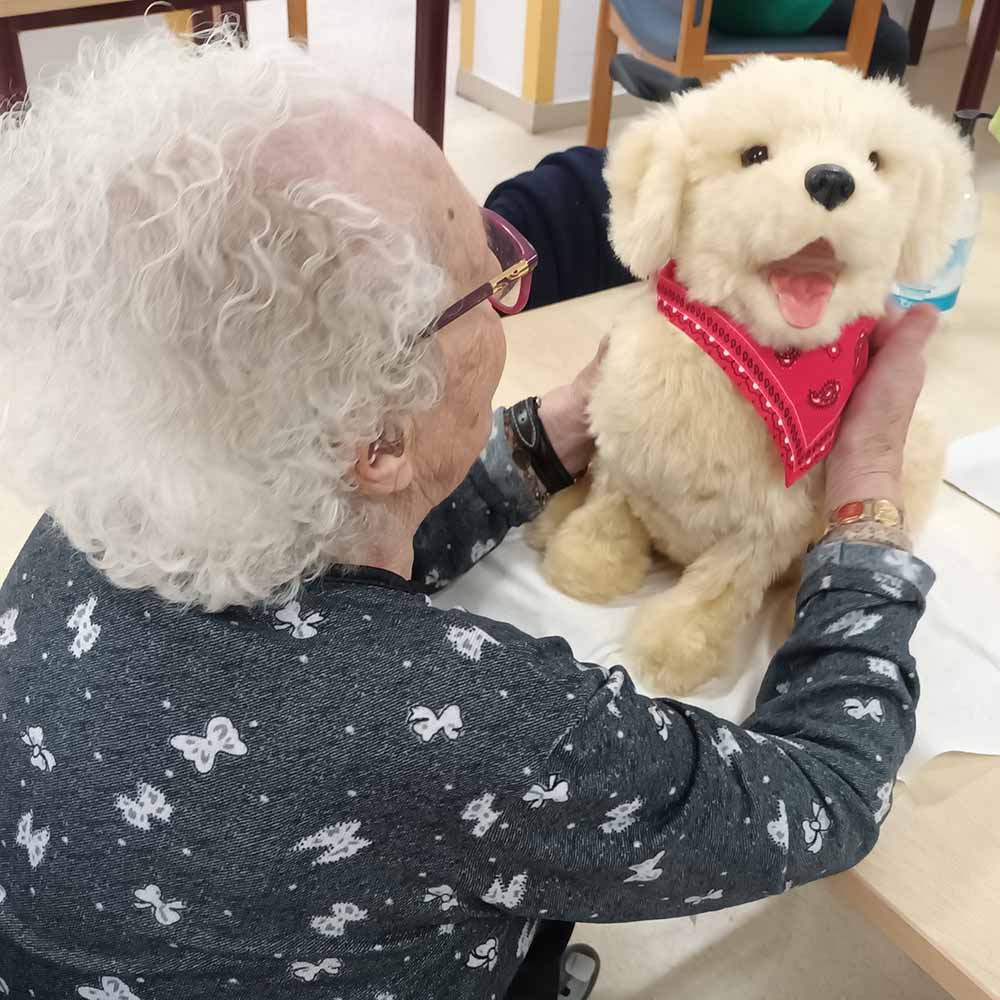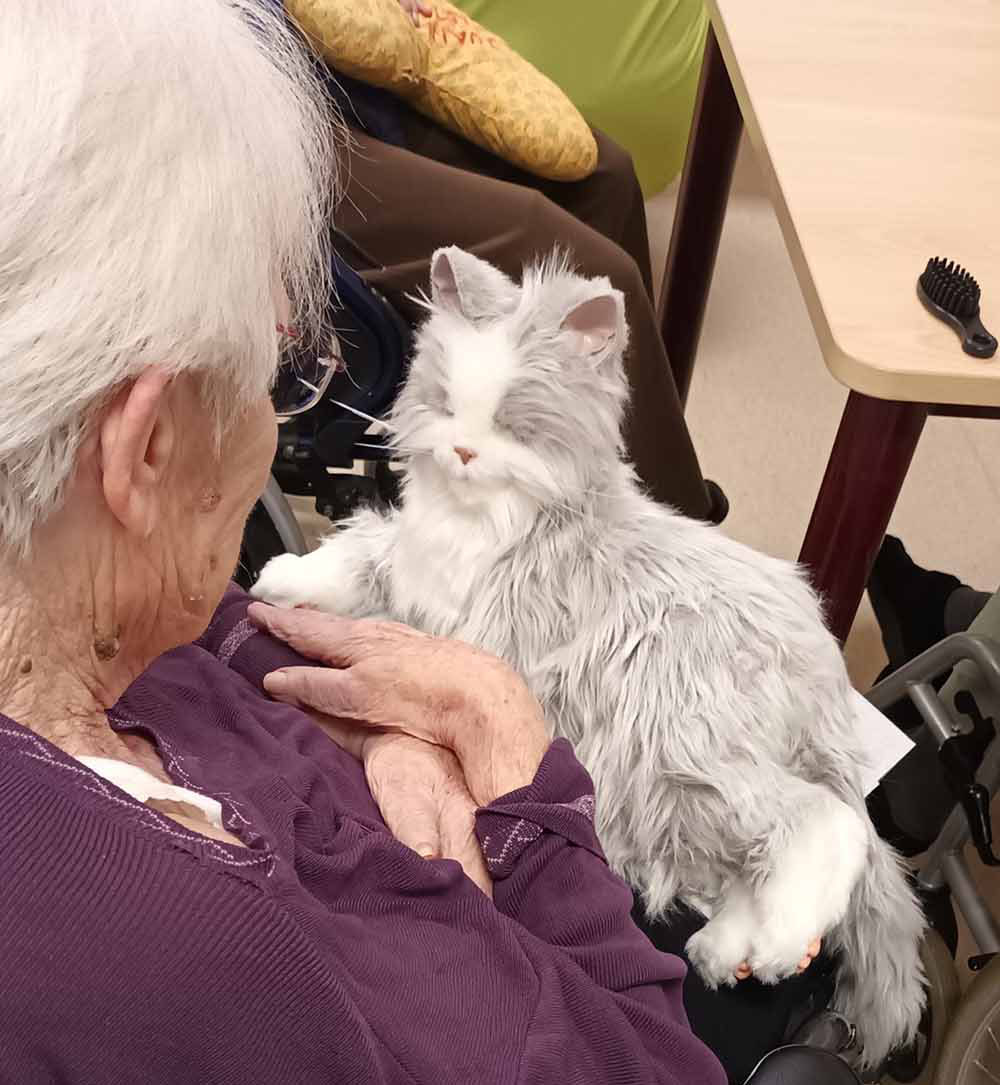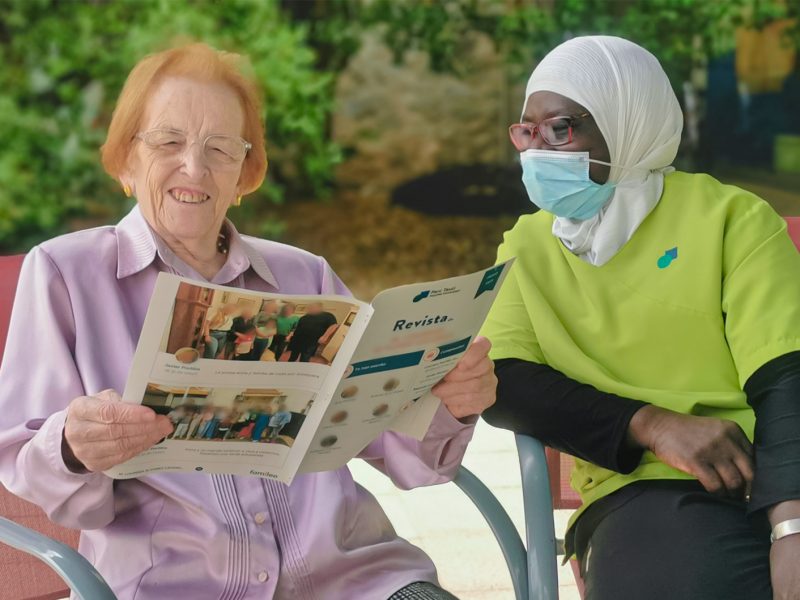- No Comments
Sabadell Gent Gran has started offering therapy with robot pets for people with moderate and severe cognitive impairment. Robot pet therapy facilitates emotional connection for people living with dementia. When petting these dogs or cats they break with their apathy and are able to show themselves more active.
Amanda Quesada, occupational therapist at Sabadell Gent Gran, has started to introduce this therapy and will lead its use in both collective and individual sessions and, subsequently, its therapeutic use on the plant by the team of gerocultors. An initial assessment of the participating residents has been carried out and their progress will be monitored.
Artificial animals, with their appearance, sounds and even movements that imitate natural ones, focus the attention of people with dementia, calm them and make them feel good. They are also an important sensory memory that causes attitudes of care and protection to arise spontaneously.
Animals are actually sophisticated contraptions. Both cats and dogs have simulated heartbeats and respond to sound and touch. Also, cats purr when petted and dogs roll over and bark when touched.
A big advantage of these artificial pets is that they don't need to be fed or cleaned or taken for a walk. Their maintenance consists of having the battery charged and disinfecting them after each session. So the resident caretakers can devote hours to them without the servitude of a real animal.
These artificial animals can be a good option for severely affected people, for whom therapy with real dogs and cats may not work as well as those with less problems, since real animals are not available at all times , they have needs and, even if they are specially trained, it is necessary to organize the activity and, often, share the contact.
A real dog or cat, along with caretakers, will always be the most desired and best option. Throughout the year we will resume activities in contact with nature, taking advantage of the outdoor garden and with organizations that bring trained dogs and cats to the residences.
Which population is it aimed at?
- People (men or women) with a diagnosis of dementia moderate to severe.
- People with manual dexterity enough to hold or pet the pet.
- visual acuity enough to recognize the shape of a cat or a dog.
- People with dementia who present psychiatric and behavioral symptoms.
- Residents with little interaction or participation in center activities.
- The limitation in spoken language is not a barrier.
- It is a complement of therapy with real animals.
What desired outcomes do we expect from robot pet therapy?
- Greater activity and attention.
- Improved communication when carrying the pet.
- Improved attitude towards other residents and carers.
- Decreased agitation during support for Basic Activities of Daily Living.
- Higher level of significant occupation of the resident's time









Leave a Reply